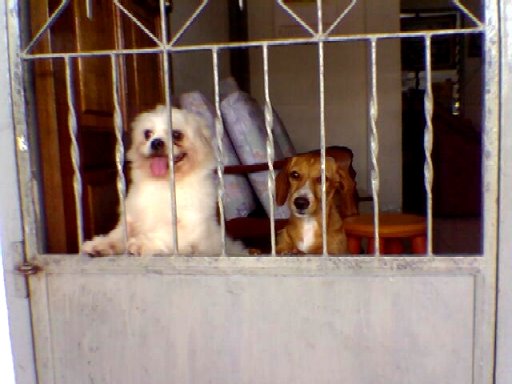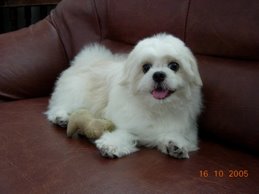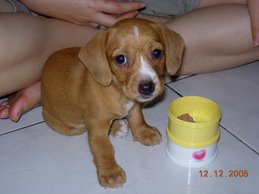A Bengal Cat Is A Beautiful And Unique Animal
Bengal cats are rarely mistaken for any other breed. This is due to their highly distinctive markings and colorings, which make them excellent show cats. A Bengal cat is also an ideal pet, and comes from a relatively new breed. Every day, cat enthusiasts learn more about these animals.
The ancestry of today's modern Bengal kitten can be traced back to the Asian Leopard cat. The Asian Leopard is a small, wild feline breed that weighs between 13 and 15 pounds. However, in the 20th century, it was bred domestically.
In 1985, the first Bengal was exhibited at a cat show. After this, in the United States and other parts of the world, such felines have become highly popular. Even though numerous individuals want to obtain such a cat merely as a pet, others make a career out of showing such cats and winning blue ribbons at exhibitions.
There are several kinds of Bengals from which to choose. The primary differences lie in the animals' markings and the color of their coats. Classic Bengals typically have gold or green eyes. However, their eyes are rarely one solid color, but are usually a primary color against a background of a light shade of brown or gray. In some cases, black or brown specks are seen in the cat's irises.
Lynx Seal points, also called Snow Bengals, typically boast a cream-colored coat, with gray or nutmeg markings. They virtually always have eyes that are blue in color. Other cats in this classification include Seal Sepia's and Seal Minks, both of which are similar in appearance to the Lynx Seal. However, they usually have gold, green, or copper eyes.
The Brown Marble is another kind of feline in this category. These cats feature coats that have a swirling pattern, in either the Snow color pattern referred to above, or the traditional Bengal design. The gold eyes that Brown Marble kittens are often born with remain unchanged as they age.
A person shopping for such a kitten will discover that he or she will not be acquiring a first-generation feline. The latter term refers to a cat with one domestic parent and one wild parent. Such animals are too wild and will not make good domestic pets. However, throughout the generations, the temperament of each litter relaxes more than the previous one. Responsible breeders do not offer kittens unless they are removed from the first generation by at least four additional generations. At this point, the cat will have a domestic temperament.
Cats of this kind are mild and intelligent and make excellent companions for both children and adults. When the kitten reaches about 3 weeks old, its fur will develop a fuzzy texture. This is an inherited trait that is completely normal and comes from the animal's wild bloodline. The coat will eventually smoothed out and distinctive markings will surface. It takes approximately twelve months for the adult markings to fully develop.
It is essential for one to select a breeder with care if he or she is planning to buy a Bengal cat. Just like any type of business, there are both dishonorable and reputable breeders of such animals. Regardless of why one is motivated to purchase such a cat, these lovely animals are sure to bring happiness to their owners.
The ancestry of today's modern Bengal kitten can be traced back to the Asian Leopard cat. The Asian Leopard is a small, wild feline breed that weighs between 13 and 15 pounds. However, in the 20th century, it was bred domestically.
In 1985, the first Bengal was exhibited at a cat show. After this, in the United States and other parts of the world, such felines have become highly popular. Even though numerous individuals want to obtain such a cat merely as a pet, others make a career out of showing such cats and winning blue ribbons at exhibitions.
There are several kinds of Bengals from which to choose. The primary differences lie in the animals' markings and the color of their coats. Classic Bengals typically have gold or green eyes. However, their eyes are rarely one solid color, but are usually a primary color against a background of a light shade of brown or gray. In some cases, black or brown specks are seen in the cat's irises.
Lynx Seal points, also called Snow Bengals, typically boast a cream-colored coat, with gray or nutmeg markings. They virtually always have eyes that are blue in color. Other cats in this classification include Seal Sepia's and Seal Minks, both of which are similar in appearance to the Lynx Seal. However, they usually have gold, green, or copper eyes.
The Brown Marble is another kind of feline in this category. These cats feature coats that have a swirling pattern, in either the Snow color pattern referred to above, or the traditional Bengal design. The gold eyes that Brown Marble kittens are often born with remain unchanged as they age.
A person shopping for such a kitten will discover that he or she will not be acquiring a first-generation feline. The latter term refers to a cat with one domestic parent and one wild parent. Such animals are too wild and will not make good domestic pets. However, throughout the generations, the temperament of each litter relaxes more than the previous one. Responsible breeders do not offer kittens unless they are removed from the first generation by at least four additional generations. At this point, the cat will have a domestic temperament.
Cats of this kind are mild and intelligent and make excellent companions for both children and adults. When the kitten reaches about 3 weeks old, its fur will develop a fuzzy texture. This is an inherited trait that is completely normal and comes from the animal's wild bloodline. The coat will eventually smoothed out and distinctive markings will surface. It takes approximately twelve months for the adult markings to fully develop.
It is essential for one to select a breeder with care if he or she is planning to buy a Bengal cat. Just like any type of business, there are both dishonorable and reputable breeders of such animals. Regardless of why one is motivated to purchase such a cat, these lovely animals are sure to bring happiness to their owners.
About the Author:
You can visit the website www.bengalsillustrated.com for more helpful information about A Bengal Cat Is Perfect For Feline Lovers
>











0 comments:
Post a Comment